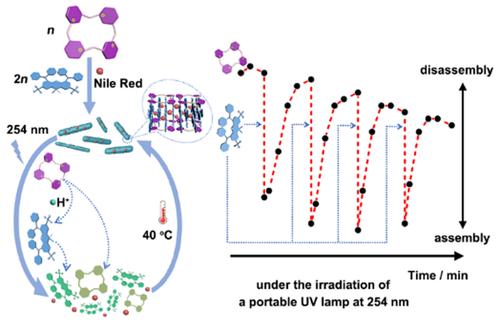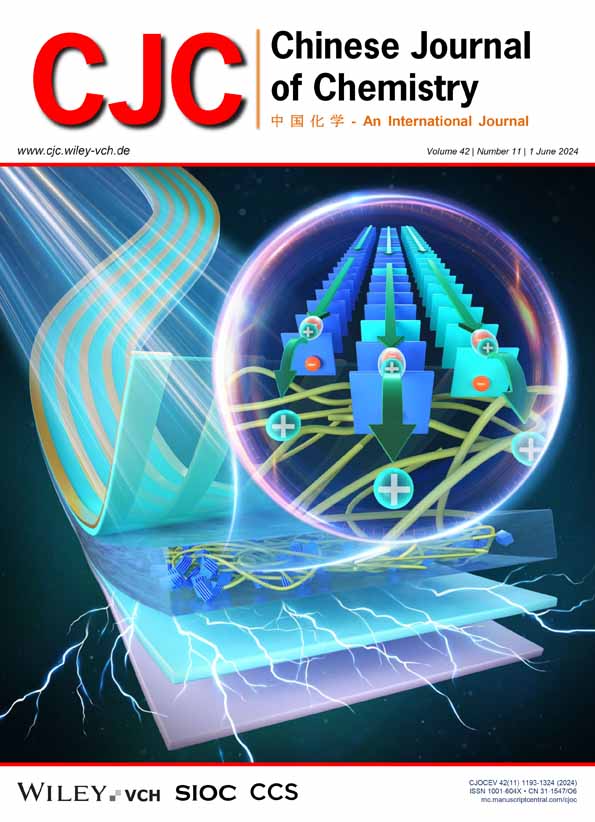Macrocyclic Calixpyridinium as a Photoacid for the Construction of Photoresponsive Supramolecular Materials
Abstract
pH is an important stimuli-responsive signal because deprotonation-protonation process is crucial for many life functions. Photoacid is a kind of photoresponsive group that can release protons upon irradiation. This property makes invasive pH control can be replaced by noninvasive light control. However, photoacid is rare. In this work, macrocyclic calixpyridinium was found to be used as a photoacid to release protons from acidic methylene under the irradiation of a 254 nm UV lamp. When the solution of calixpyridinium−disulfonated xantphos aggregates were irradiated by a 254 nm portable UV lamp, disulfonated xantphos was able to receive the protons released from calixpyridinium. This noninvasive photocontrolled proton transfer not only replaces an invasive pH regulation but also achieves a synergistic function. The deprotonation of calixpyridinium and the protonation of disulfonated xantphos can occur simultaneously to disrupt the aggregates. Moreover, the photoresponsive disassembly is reversible by heating. This photoresponsive material was further applied as a photocontrolled release model. In addition, a dissipative assembly was successfully designed based on this photoresponsive disassembly. This study supplies a generalized strategy to construct pH-responsive biocompatible materials with light-control properties by using macrocyclic calixpyridinium and its matched various guests in water.



 求助内容:
求助内容: 应助结果提醒方式:
应助结果提醒方式:


